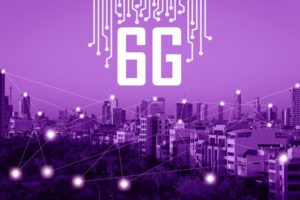5G Technology World spoke with Paul Challoner, VP Network Product Solutions at Ericsson, at the Fall 2022 6G Symposium in Washington, DC.

Many of the discussions at the Fall 2022 6G Symposium, and indeed prior conferences, focus less on the technology and more on experiences. To deliver those experiences, the communications industry still must deliver more bits per second than they do today. If digital twins, holograms, augmented/virtual reality, and dare we say the metaverse are to become a mobile reality, hardware engineers will have to design the systems needed to deliver those bits. While data rates may become less of a selling point than in previous generations, we will nevertheless still need more data.
6G is still mostly talk with some university research going on, particularly in sub-THz frequencies (100 GHz to 300 GHz). Indeed, the symposium featured demonstrations of data transmissions at frequencies above 100 GHz. At some point in the next few years, RF engineers will begin designing the silicon and radios to make these digital dreams come true. 5G Technology World met with Ericsson’s Paul Challoner, VP Network Product Solutions at Ericsson, to discuss the roles RF engineers will need to take on to make 6G a reality. You can listen to the interview in it’s entirety above. Highlights of the interview appear below.
5GTW: When do expect RF engineers to take on a major role in 6G product development?
Challoner: If we think that the time for 6G is 2030, then I think that 3GPP will have standards in about 2028. Ahead of that, we should have two 3GPP releases in standardization phase. Right now, we’re thinking about the fundamental research and technologies that will be standardized. If you think of the radio, then you think about what will be the physical layer. Research will define the signal processing in the radio. Ahead of that, we have to look at the radio techniques we will use. Massive MIMO is one of those techniques. It will get more sophisticated. One of the techniques we’re looking at for 6G is distributed MIMO combined with OFDM.
5GTW: Ten years ago, we needed to perform channel sounding for 5G. Will we need to do that again for 6G?
Challoner: Although mmWave signals had been around for years, we didn’t have practical data so we went around to cities in the U.S. to get a better understanding of reflection and refraction to design good radios. Sub-THz frequencies are good candidates for 6G. There will be fundamental work. Sub-THz is just once possible band and we don’t want to commit to that just yet.
5GTW: Could current mmWave frequencies such as 28 GHz and 39 GHz be used for 5G?
Challoner: 6G can be applied to all frequency bands including mmWave. We’re now in the third generation of mmWave radios. If you go to an NFL stadium, you’ll be using mmWave. In the last Super Bowl, 80% of the 5G traffic was on mmWave. It’s a critical band that needs more use. Currently, telecom operator investment is going into mid-band frequencies, but investments will shift to mmWave.
5GTW: With distributed antennas, does that mean one physical radio will drive numerous antennas in different locations?
Challoner: One of the main antennas that we use in the U.S. is a 64 transmit/64 receiver array. Instead of having a single radio, you can move those out into say four or eight sub-arrays to transmit individual channels separately.
5GTW: Does going to sub-arrays mean that you lose some of the directionality that you get from a single 64×64 array?
Challoner: It’s a tradeoff. As I distribute the antennas, I get less directivity but can take advantage of the radio environment in a better way. If I synchronize the signals, I can get better gain.
5GTW: What technologies will we need to reach 6G such as amplifiers, filters, waveguides, and silicon?
Challoner: Each node will need evolution if not evolution. Processing capabilities for 6G will be more sophisticated and we’ll need lower latency. Those demands will result in the need for new silicon. In the radio bands, we will need new power amplifiers and power transistors. There will be a new ecosystem developed for 6G.
5GTW: Do you think we will need new modulation?
Challoner: Claude Shannon established theoretical maximums. OFDM is been a good approach. We’ve increased modulation from 64QAM (quadrature amplitude modulation) to higher modulations. That always creates a tradeoff because you need higher signal-to-noise ratios. There is a practical distance limitation as you go to higher modulation levels.
5GTW: How might we reduce energy consumption in 6G radios?
Challoner: Going from 4G to 5G, the peak-to-main signal improved so the average energy per bit in a 5G New Radio signal improved by 40%. It’s really about how you use the power amplifiers and switching them on and off at the right time. The big power savings comes not at the bit level but at the radio control level. Using artificial intelligence to put the radio to sleep when it’s not in use has a much bigger effect on overall energy consumption. Radio power efficiency is also a major factor. We have to define key performance indicators and link them back to the radio.





Tell Us What You Think!